We all love sourdough bread, but what’s even better is adding things to your dough. And this combination is absolute perfection. I know it seems like a lot of steps, but you do it bit by bit and it’s not overwhelming. You’ll adore a big slice of this with soup or chili, or slathered with butter on the side of your dinner plate.
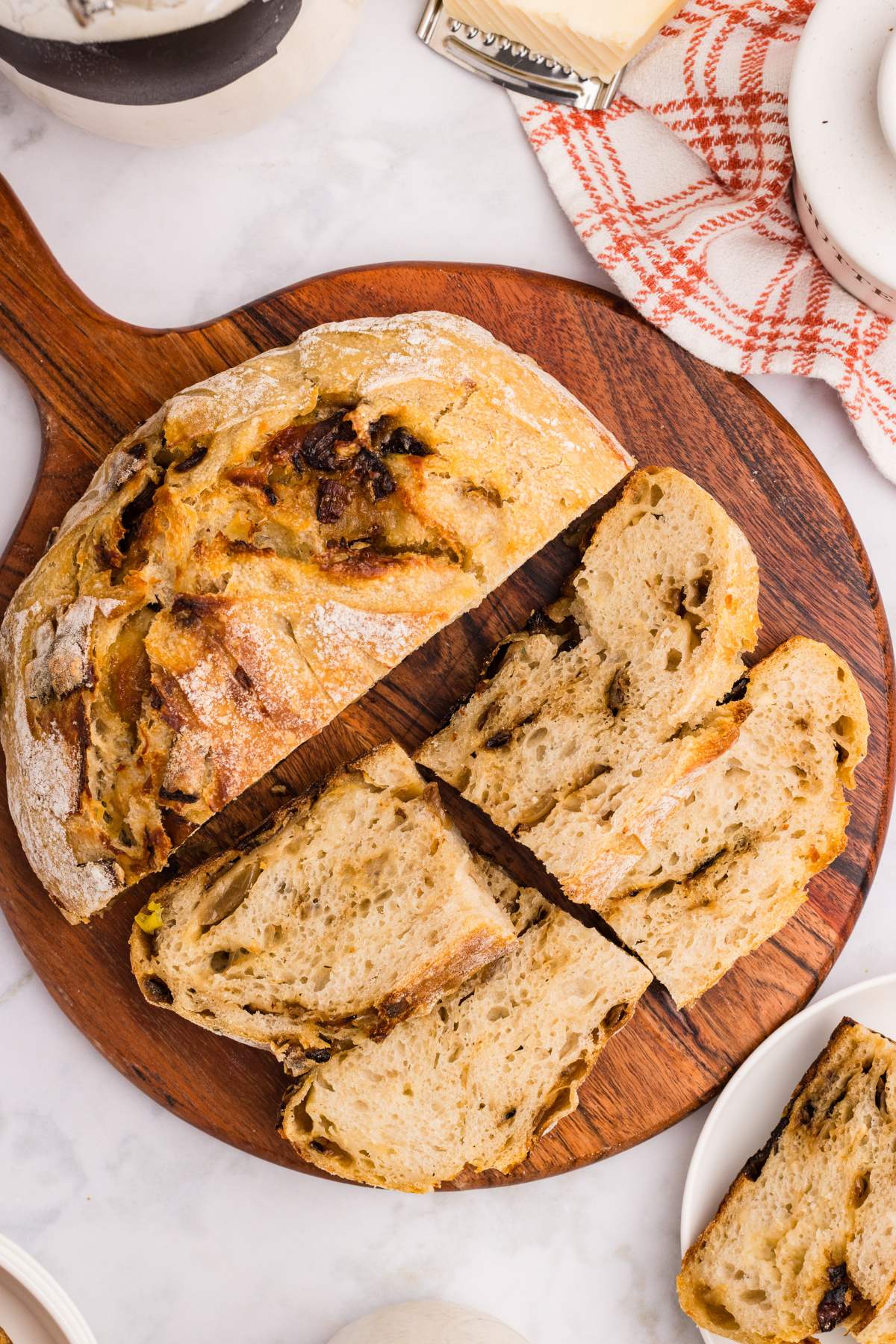
Sweet, jammy caramelized onions and nutty Gruyere cheese are folded into dough and baked into a golden-crusted loaf. No need to rush: sourdough is slow food, and that’s part of the charm. Mix it in the afternoon, let it rise overnight, and enjoy fresh-baked bread the next day.
Ingredients and Tools You’ll Need
I’ve always loved King Arthur Flour but recently I’ve been using Costco’s Kirkland brand and I love that too! Just in case you’re wondering.
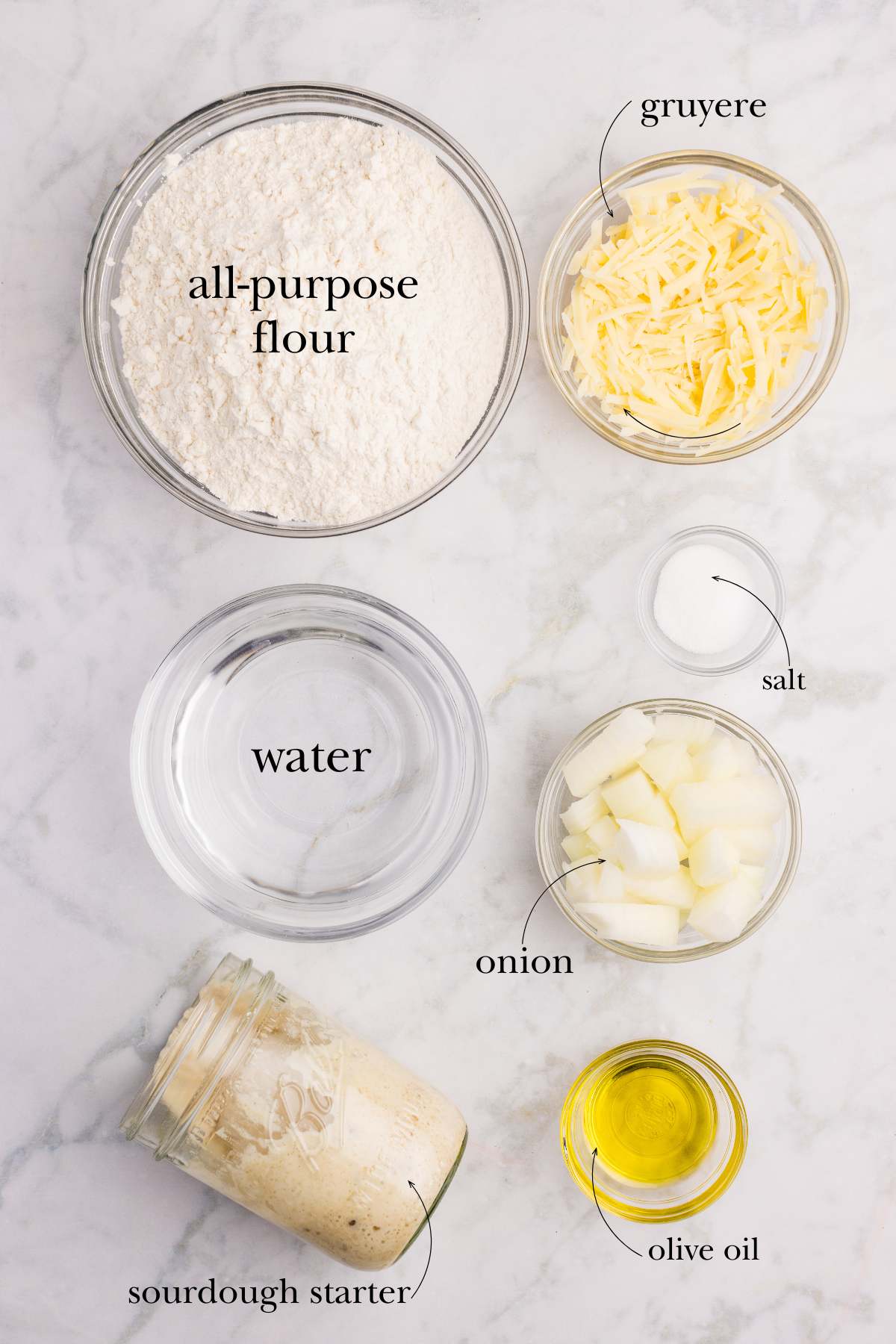
Heart’s Content Farmhouse is a participant in the Amazon Services LLC Associates Program, an affiliate advertising program designed to provide a means for sites to earn advertising fees by advertising and linking to Amazon.com. This means that when you click on certain links on this site and make a purchase, I may earn a small commission at no additional cost to you. I only recommend products I genuinely believe in and would use in my own kitchen. As an Amazon Associate, I earn from qualifying purchases.

Get a Free + Pretty PDF Recipe Book
Sourdough Sunday Newsletter

Every Sunday evening I’ll send you a sourdough recipe to make that week, straight from my kitchen to your inbox.
And as a thank you for signing up, I’ll send you this e-book with beautiful printable recipes right away. Simple!
You will not be added to any other email lists or my daily newsletter. But if you’re already on my newsletter, you’re welcome to join and receive both.
Ingredients:
- 1 cup water, warmed to 90°F (240 g)
- ½ cup active sourdough starter (100 g)
- 1 tablespoon salt (15 g)
- 3 cups all-purpose flour (360 g)
- 1 medium yellow onion (red or white will work in a pinch)
- 1 tablespoon olive oil
- 1 cup shredded Gruyere cheese (try Jarlsberg or a good aged Swiss if you don’t have Gruyere)
If you’re just getting started and need help making your own sourdough starter, I can help.
Helpful Equipment:
- Mixing bowl
- Digital scale
- Cast iron skillet
- Dutch oven
- Banneton basket (or a bowl with a tea towel)
- Parchment paper
- Wooden spoon or spatula
How to Make Caramelized Onion and Gruyere Sourdough
Step One: Feed Your Starter
Start by feeding your starter. About four hours before you mix your dough, combine 20 grams of sourdough starter with 40 grams each of water and flour (a little rye flour can give it a boost).

Stir, cover, and let it sit at room temperature until it’s bubbly and doubled in size.
Step Two: Mix Bread Ingredients
Once your starter is ready, combine it with the warm water in a mixing bowl and stir until it’s mostly dissolved. Add in the flour and salt, then stir everything together.

The dough will be sticky. That’s exactly how it should be. Cover the bowl and let the dough rest for 30 minutes.
Step Three: Caramelize the Onion
While the dough rests, you’ll caramelize the onion. Dice it into small pieces, then heat some olive oil in a cast iron skillet over medium-low.

Add the onion and cook slowly, stirring now and then, until it’s soft and golden. This takes about 20 minutes. Set the onions aside to cool completely.
Step Four: Stretch and Folds
Now it’s time for stretch and folds. Every 30 minutes or so, reach under the dough, pull it up, and fold it over itself. Rotate the bowl and do this on all four sides.
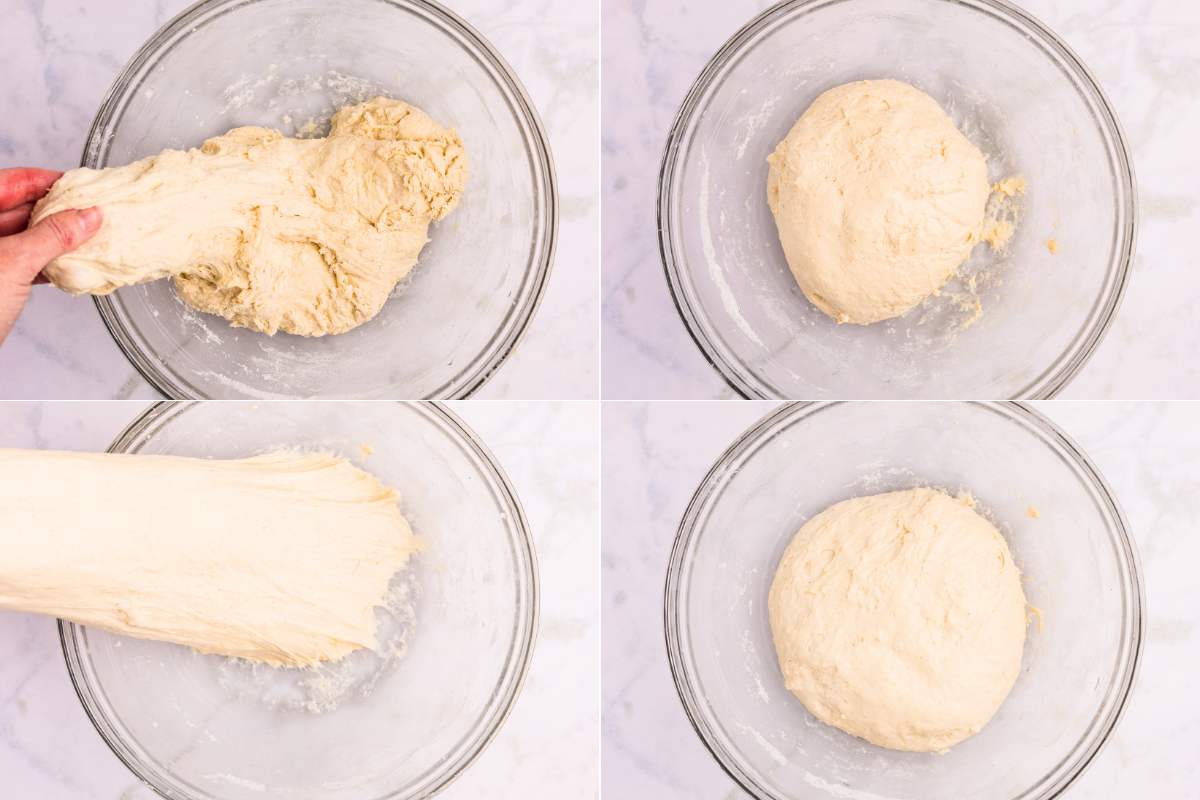
You’ll do 4 or 5 rounds in total. The dough will become stronger and smoother as you go. Don’t worry if it tears or resists in the beginning, it gets more elastic with each session.
Step Five: Time for Mix-Ins
Once the dough feels strong and holds its shape, gently flatten it to about an inch thick. Sprinkle most of the onions and cheese across the surface, then fold the dough up into thirds like a letter. In some of my other recipes, like jalapeño and cheddar sourdough, I prefer adding everything at once, but with this recipe folding the mix-ins in worked better.

Add the rest of the onions and cheese on top, then tuck the dough into a ball.
Step Six: Bulk Rise
Transfer it to a clean bowl and cover it.

Let it rise at room temperature until doubled, which can take 8–12 hours depending on how warm your kitchen is.
Step Seven: Shape and Chill
When it’s ready, turn the dough out onto a lightly floured surface. Handle it gently to keep the bubbles inside. Shape it into a round, then place it smooth-side down into a floured banneton or lined bowl. Pinch the bottom seam closed.

Cover the bowl and pop it in the fridge overnight. This cold proof helps deepen the flavor and makes the dough easier to handle.
Step Eight: Bake
I know, I know, this is taking forever.
When you’re ready to bake, take the dough out of the fridge and let it sit at room temperature for about an hour. Meanwhile, place your Dutch oven into the oven and preheat to 450°F. Once the oven is hot, give the Dutch oven another 10–15 minutes to really heat through.

Turn your dough out onto parchment paper, score the top with a razor blade or sharp knife, and carefully lower it into the Dutch oven. Bake covered for 25 minutes, then uncover, reduce the oven to 375°F, and bake for another 25 minutes. The crust should be deep golden brown and sound hollow when tapped.
Let the bread cool for at least 30 minutes before slicing. Cutting it too soon can make the crumb gummy (hard as it is to wait).
How to Use Your Finished Bread
Sometimes when you make a “weird” sourdough bread it feels hard to use. Fear not. I am a bread-eating expert.

- Grilled cheese: Toast slices in butter with more Gruyere or cheddar. Add mustard or thin apple slices for extra flavor. Or use it for jalapeno popper sourdough grilled cheese.
- Toast with eggs: Top a warm slice with a fried or poached egg. Add avocado or herbs if you like.
- Crostini for soup: Slice, toast, and top with goat cheese or roasted garlic. Great with tomato or potato soup.
- Open-faced sandwiches: Top with fig jam and prosciutto, or cream cheese and smoked salmon. Fancy but easy.
Questions and Troubleshooting
Make sure your starter is active, first of all. It should be bubbly, doubled in size, and pass the float test (a spoonful should float in water). If your kitchen is cold, try letting the dough rise in the oven with the light on or near a warm appliance.
That’s normal in the beginning! As you stretch and fold, the dough will strengthen and become easier to shape. Lightly flour your hands if needed, but try not to add extra flour to the dough itself.
That’s okay. Just tuck them back in as you roll the dough into a ball. A few stray bits on the outside will bake up beautifully and add flavor.
Printable Recipe
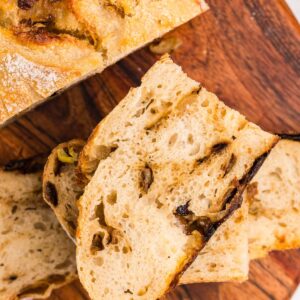
Caramelized Onion and Gruyere Sourdough Bread
Ingredients
- 1 cup warm water, about 90°F
- ½ cup active sourdough starter
- 1 tablespoon salt
- 3 cups all-purpose flour
- 1 medium yellow onion
- 1 tablespoon olive oil
- 1 cup shredded Gruyere cheese
Save This Recipe
You'll join my email list which you will love. And if you don't, unsubscribe in one click. ❤️
Instructions
- Feed your starter. About 4 hours before making the dough, feed your starter and let it sit at room temperature until bubbly and doubled in size.
- Mix the dough. In a mixing bowl, combine the water and starter. Stir to dissolve. Add flour and salt and mix until no dry flour remains. Cover and let rest 30 minutes.
- Caramelize the onion. Dice the onion. Heat the olive oil in a skillet over medium-low and cook the onion for about 20 minutes, until soft and golden. Let cool.
- Stretch and fold. Do 4–5 rounds of stretch and folds, 30 minutes apart, until the dough feels smooth and elastic.
- Add cheese and onion. Gently flatten the dough, sprinkle with most of the onion and cheese, fold into thirds, then shape into a ball and tuck in the rest of the add-ins.
- Bulk rise. Place dough in a clean bowl, cover, and let rise at room temperature until doubled, 8–12 hours.
- Shape and chill. Shape the dough into a round and place seam-side up in a floured banneton or bowl. Cover and refrigerate for 6–8 hours or overnight.
- Bake. Preheat oven to 450°F with a Dutch oven inside. Turn dough onto parchment, score the top, and bake covered for 25 minutes. Uncover, reduce heat to 375°F, and bake 25 more minutes. Let cool at least 30 minutes before slicing.
Notes
Let the bread cool fully before slicing to avoid a gummy texture.
Store at room temperature for 2–3 days or freeze for up to 3 months.
Substitute Gruyere with aged Swiss or Jarlsberg if needed.
Nutrition



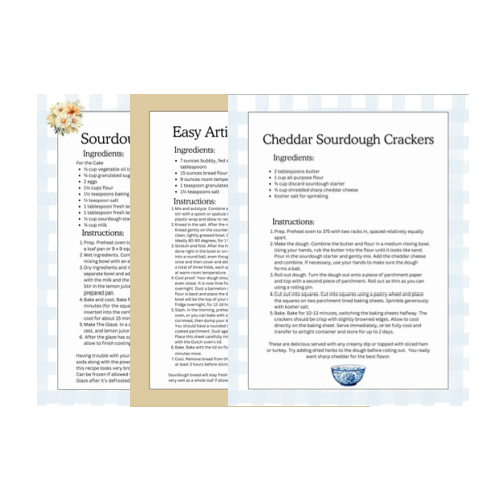
More to Explore
Hot Pepper Jelly Glazed Wings
Simple Homemade Marinara
How to Make Garlic Powder in a Dehydrator
Homemade Spiced Apple Rings (For Canning)